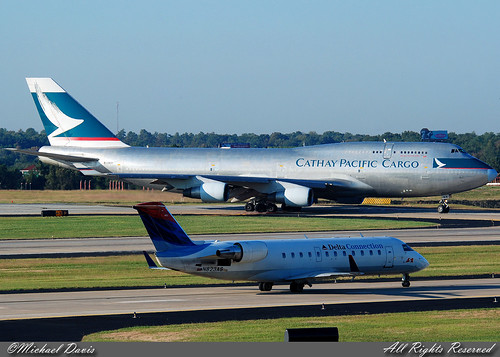Change you can believe: India’s incredible journey from holiday backwater to the destination du jour
(Source: Times, UK)
As a sales pitch for a holiday paradise, you would think it left much to be desired. “We have hoardings obscuring heritage sites, we have terrible roads, we have sewage and solid waste problems. And we have some of the lousiest airports in the world.”
But Amitabh Kant’s blunt critique of his homeland’s shortcomings is part of an approach that has earned glowing reviews from some of the tourism industry’s fussiest arbiters – picky Western travel writers.
When he is not deploring the state of Indian public toilets, the dapper civil servant, who in 2001 was handed the job of rescuing India’s sinking tourism industry, likes to measure his success by counting the billions of dollars that he has helped to add to the country’s foreign currency reserves by luring upmarket travellers to the lush backwaters of Kerala and the grand palaces of Rajasthan.
In industry circles, he is treated as something of a guru. The day before talking to The Times, Mr Kant had been the guest of honour at a lavish Mumbai reception hosted by Ratan Tata, India’s most-fêted businessman.
Mr Kant’s journey in the tourism industry began at a similarly inauspicious time for the tourist trade. In 2001, when he became joint secretary of the Ministry of Tourism in Delhi, India’s tourism-related revenues were languishing at $2 billion a year, less than 0.5 per cent of the industry’s global turnover.
Across the country, hotel room occupancy rates had fallen to 25 per cent and tour operators were refusing to offer trips to India in their brochures. Faced with a crisis, he says, his objective was clear: to redefine India as a luxury destination, and to discourage those looking for an ultra-cheap getaway.
In an effort to dissuade the gap-year students, Goa-bound ravers and ageing hippies that have travelled India for decades, Mr Kant tried to stop cheap charter flights flying to popular seaside locations such as Kerala. To replace them, he promoted new, sometimes controversial, “high-value” forms of tourism.
Among the most radical moves was the decision to promote India as a destination where foreigners can access cheap medical care. The resulting steady stream of middle-class Western patients has proven lucrative, but some feel that Indian doctors would be better employed treating Indian patients.
Across the country’s seldom-travelled agricultural hinterlands, “rural tourism” was championed, with villagers being trained in how to host Westerners and sell them handicrafts. Entrepreneurs have been encouraged to set up homestays, houseboats and treehouse hotels.
But the main tool he used to attract these well-heeled travellers was the “Incredible India” campaign. A series of adverts displayed internationally but co-ordinated by Mr Kant from Delhi, it represented India’s first attempt to sell itself under a single banner.
Visible today in London and New York, it was launched in 2002, just as the post-9/11 malaise in the global tourism industry was approaching its nadir. As rival destinations slashed their promotional budgets, India, under Mr Kant’s direction, ramped up its spending, splashing out to create a marketing strategy far slicker than anything it had used before.
The gamble worked. Last year, when Mr Kant’s tenure at the ministry ended (and he was rotated to a posting in his home state of Kerala), India’s annual earnings from tourism had risen more than fivefold, to $11.6 billion, and the readers of Conde NasteTraveller had ranked India as the world’s “No1 preferred travel destination”.
The most commonly cited example of India’s lax attitude towards its cultural assets is that of the Taj Mahal, a building often referred to as the world’s most magnificent monument to love but which is near a heavily polluted river and is serviced by a dank, smelly, intimidating train station.
Mr Kant blames “a failure of municipal governance” for the Taj’s inglorious surroundings. India’s state chief ministers, arguably the country’s most powerful politicians, need to realise that tourists can be more lucrative even than that totem of India’s economic renaissance: software.
“The size of the tourism industry is $4.6 trillion [£2,800 billion], whereas the software industry globally is a mere $500 billion,” he said. “The tourism industry globally generates over 250 million jobs, whereas the software industry generates only 20 million.
“But you can’t cultivate tourism by having the Taj Mahal, a great heritage site, and having garbage and filth outside. The entire experience has to be spiritually and mentally rejuvenating.”
Click here to read the entire article.
Note: A couple of comments under this article were too compelling to not publish. So, I copied and pasted them here:
Just returned from 6 weeks back-packing in South India and have to say that it was undoubtedly ‘incredible’ – that’s incredible noise, incredible pollution, incredible poverty but then again incredible sights, incredible food and most of all incredible people. Amitabh Kant’s campaign is spot -on!
Jim Blair, UK
Just returned from business to Mumbai, Agra, Delhi and Chennai. Could not agree more with Mr Kants assessment of the airports – shockingly bad and very indifferent to business and first class passengers. However, every Indian I met was extremely helpful. Customer service everywhere puts UK to shame!
Andy Dean, UK










